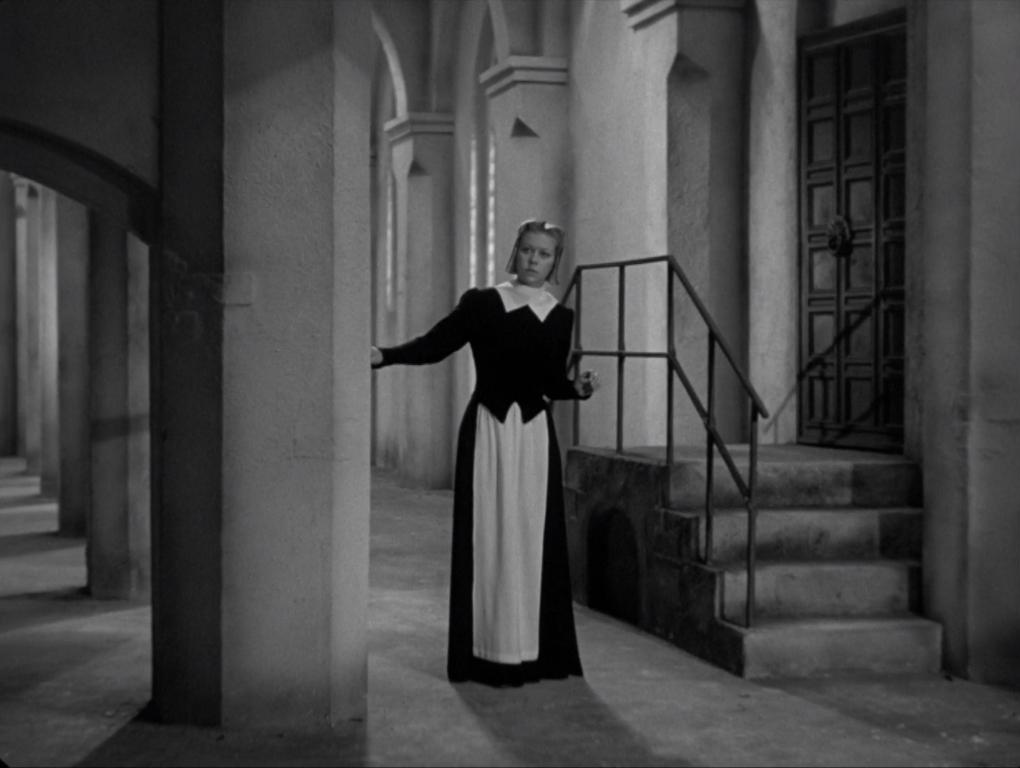
Day of Wrath
1943, directed by Carl Theodor Dreyer
It’s fair to say that Carl Theodor Dreyer’s Vampyr is a film that genuinely believes in vampires. Not Halloween vampires like Dracula, Nosferatu, or the film’s own villain Marguerite Chopin, but the vampirism of ordinary people like Allan Gray whose passivity and misdirected romanticism make for a bloodthirsty existence, a kind of living death, until they learn to participate in the give and take of life with other beings.
By the same token, Day of Wrath is made with a genuine belief in witchcraft. Not the witchcraft of broomsticks, cauldrons, pointy hats, and green faces, nor the late medieval theological notion of witchcraft hurled against Herlof’s Marte, but a real form of witchery whose diabolical power is at the crux of the film’s argument.
This real-life sorcery reveals itself in an unexpected symmetry between witches and their oppressors. The first scene ends with a cut between two old women, from an accused witch escaping through a barn door, to the woman who will later denounce Anne as a witch, entering boldly through another door, hinting that the two women share more in common than their appearance. Instead of belaboring the imbalance between helpless witches and their cruel persecutors, Dreyer finds an equivalence between them – not to deny the injustice, hypocrisy, or sexism of witch hunts, but to get at the roots of these wrongs.
The film tells us repeatedly that the height of witchcraft is the power to cause death by wishing it. Anne’s mother had reportedly exercised this power; Herlof’s Marte promises her judge Laurentius that he will be the next to die; and Anne causes her husband Absalon’s death by wishing it aloud in his presence. But this supernatural power to kill with a wish is a mirror image of the temporal power of political and religious authorities who also kill just by wishing it.
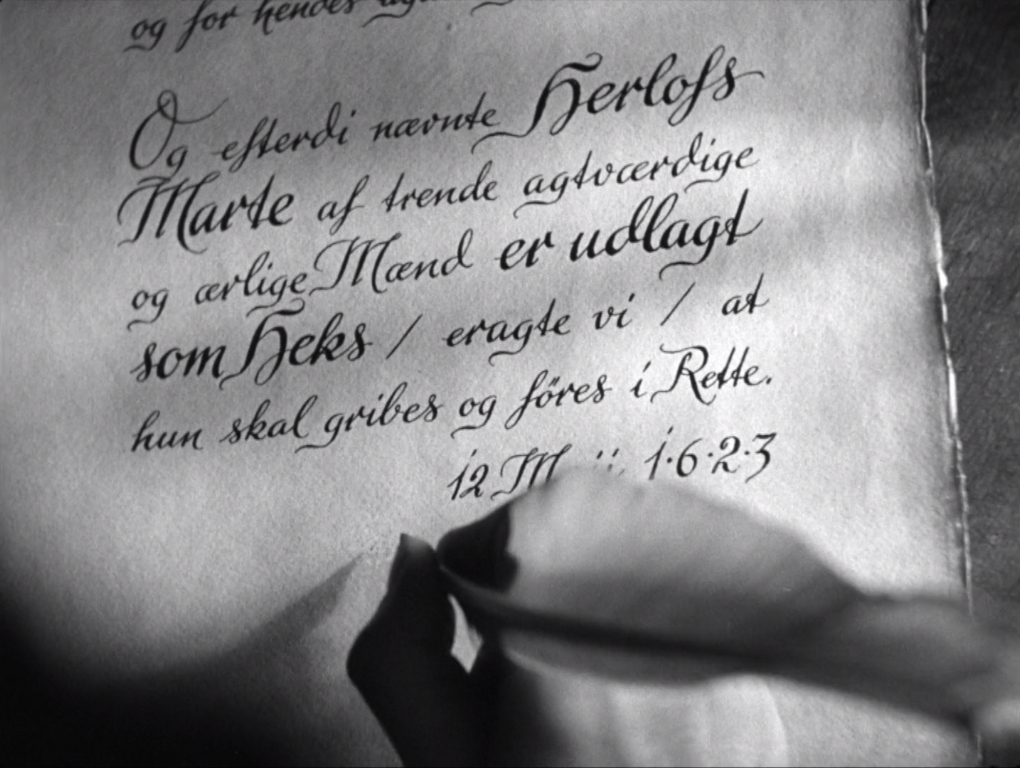
The witch’s curse and the judge’s edict are thus two versions of the same thing, and the real witchcraft in Day of Wrath is the diabolical power of words. The film is bracketed by images of words, scrolling through the grim lyrics to the Dies irae, and its action begins with a hand and quill writing out the accusation against Herlof’s Marte. Three more times the film will cut to written texts, each conveying a dire result – the announcement of Marte’s trial, the record of her confession, and Absalon’s diary entry after her death. Books too have a sinister presence, even when we don’t see the words inside. During Marte’s torture and interrogation the judges sit among heavy books, and Absalon is absorbed in books while Marte begs in vain for her life.
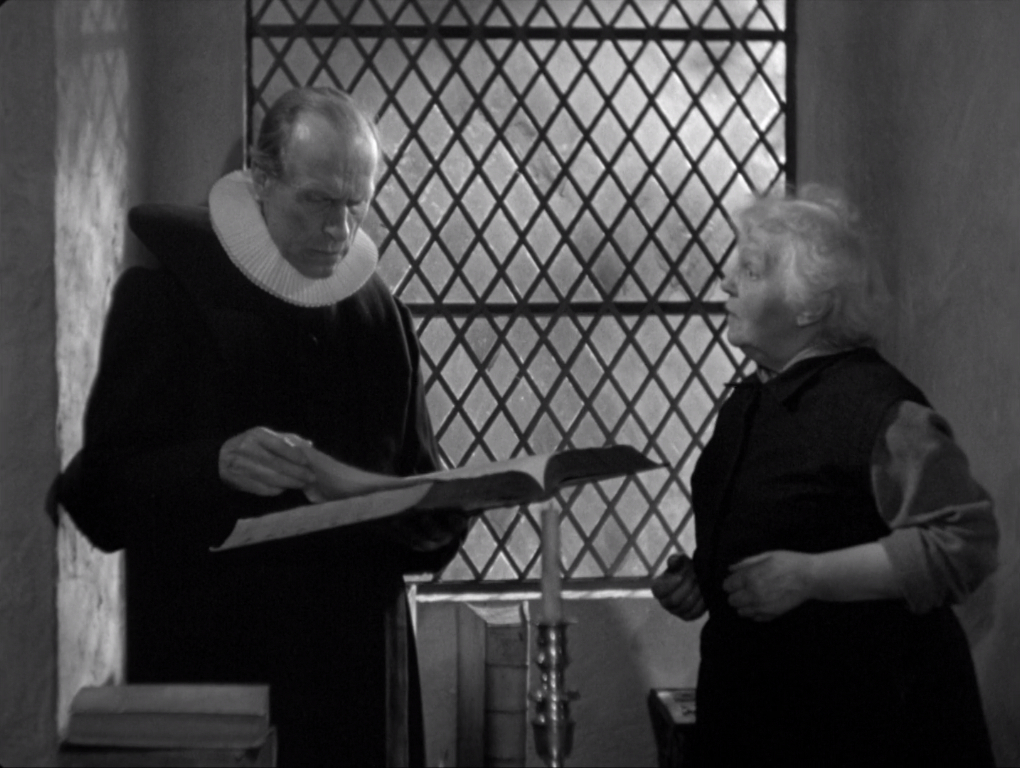
The symmetry in Day of Wrath goes beyond the witches’ and judges’ equivalent powers; they are also alike in being neither wholly guilty nor innocent. For all the horrors we witness, it’s remarkable how sympathetic the villains often are. Absalon is a gentle, doting, and generous husband, painfully aware of his guilt toward Anne and tormented by his sins as a judge. Laurentius seems to recognize the justice in Marte’s curse on him. Meanwhile Marte, though piteous and sympathetic, calls death and damnation upon Anne, who’s never yet harmed anyone, hoping her threats will move Absalon. Once they start their hidden love affair, neither Anne nor Martin is innocent either.
How do these kind, patient, God-fearing people go so far wrong as to hate and denounce each other, to deceive and betray their own kin, and even to torture and burn to death a poor old woman? Again the blame falls on words, which not only kill but also corrupt. No cruelty is too great for Absalon if he can tell himself he’s acting for his victim’s immortal soul. Absalon’s mother initially denies she’s driven by hatred for Anne, calling it instead a protective love for her only son. Numerous conversations expose the arbitrariness of language, like Martin’s and Anne’s divergent interpretations of the reflected tree. Words can also be corrupted into weapons: “I am Absalon’s wife.” “But I am his mother.” Abstract or intangible words like “deserve” and “evil” smooth the path toward playing God; Absalon says Marte “deserved” her punishment, as if any mortal could possibly know what another deserves.
In three separate places the movie introduces the image of an apple tree – in Martin’s songbook, at dinner when Anne reads from the Song of Songs, and in Anne’s drawing. In Western art an apple tree is the usual stand-in for the Tree of Knowledge of Good and Evil, the locus of original sin. Day of Wrath traces the origin of sin to language, and it contrasts the destructive power of words with its own primordial Garden of Eden. Immediately after the handwritten verdict of Marte’s trial, the movie cuts to a beautiful wordless scene of nature as Anne and Martin go for a stroll outdoors. The scene is idyllic until its only words appear – Anne asks why someone’s gathering firewood so early in the summer, and Martin replies that it’s fuel for burning Marte. It’s no accident that these disruptive words coincide with both the destruction of nature and the horror of killing.
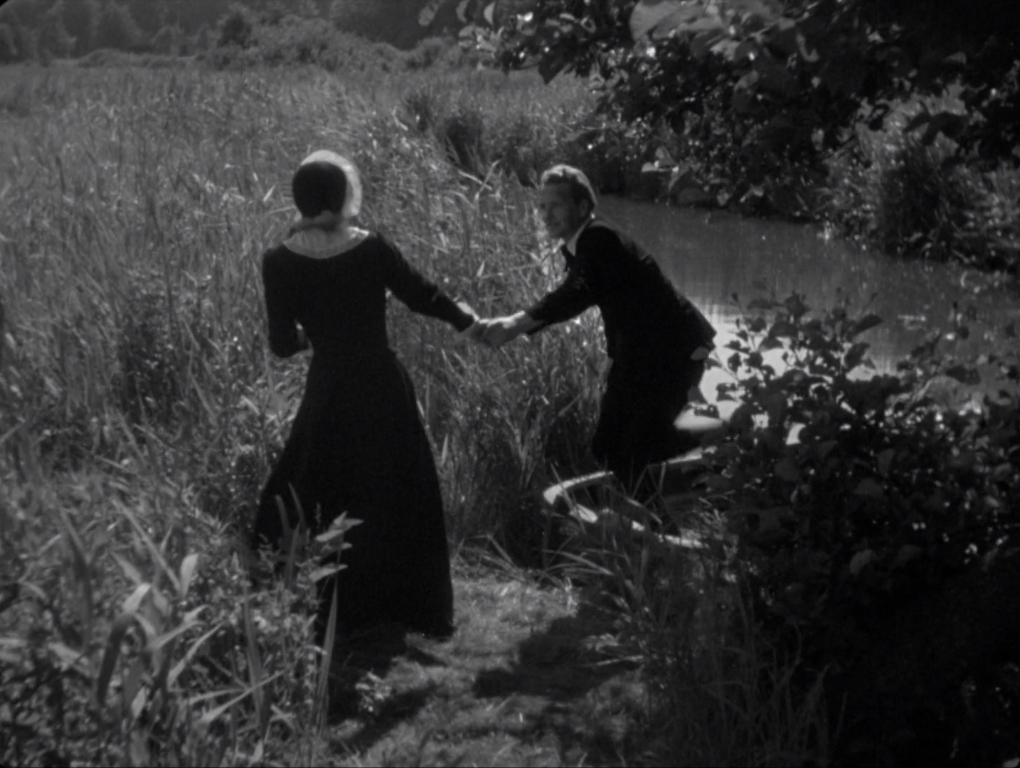
Anne and Martin venture out among the trees, meadows, and streams four times, in counterpoint to the four insertions of written texts. Their outings are not all as wordless as the first, but their talk is free from the kind of language that seeks advantage or justification. Just as the film finds no particular character wholly guilty, neither does it condemn all language. Many times words are put to a good purpose, but their power on these occasions is so much weaker. Marte’s pleas for mercy are no match for Absalon’s rationalizations, and the words from Martin’s songbook, though not sinister like the heavy books of the town elders, are quickly forgotten. Even Holy Scripture fails to do any good when Anne uses it to flirt with Martin, triggering her mother-in-law’s wrath. During Martin’s eulogy for his father, an old man cups his hand to his ear – why puncture the somber occasion with this comic gesture if not to show how often good words fail to register? When Absalon seeks to comfort Laurentius, when Martin appeals to Anne to separate, when Martin’s grandmother urges him to find a wife, when Anne dreams of a better future, or when Absalon confesses his selfishness to Anne, each time the words aim for a good purpose that they never achieve.
The insight here bears comparison to the real world, where it’s so easy to do harm with words and so hard to use them for good. Politicians are well aware that negative campaigns are more effective than positive, no matter how much voters yearn for civility. Malicious gossip will always find an audience, but constructive words face a strong headwind.
A movie about witch hunts made in the middle of World War II naturally invites comparisons to Nazi roundups, but Dreyer always denied the comparison. Certainly if Day of Wrath were an allegory about Nazi persecutions it would not go so far in drawing equivalences between victims and perpetrators. Yet Dreyer’s disavowals do not mean that the movie doesn’t speak to its time in history. Anyone in Denmark watching in horror as fascism took over Europe would be acutely aware of the devilish power of words to enlist good people in atrocities.
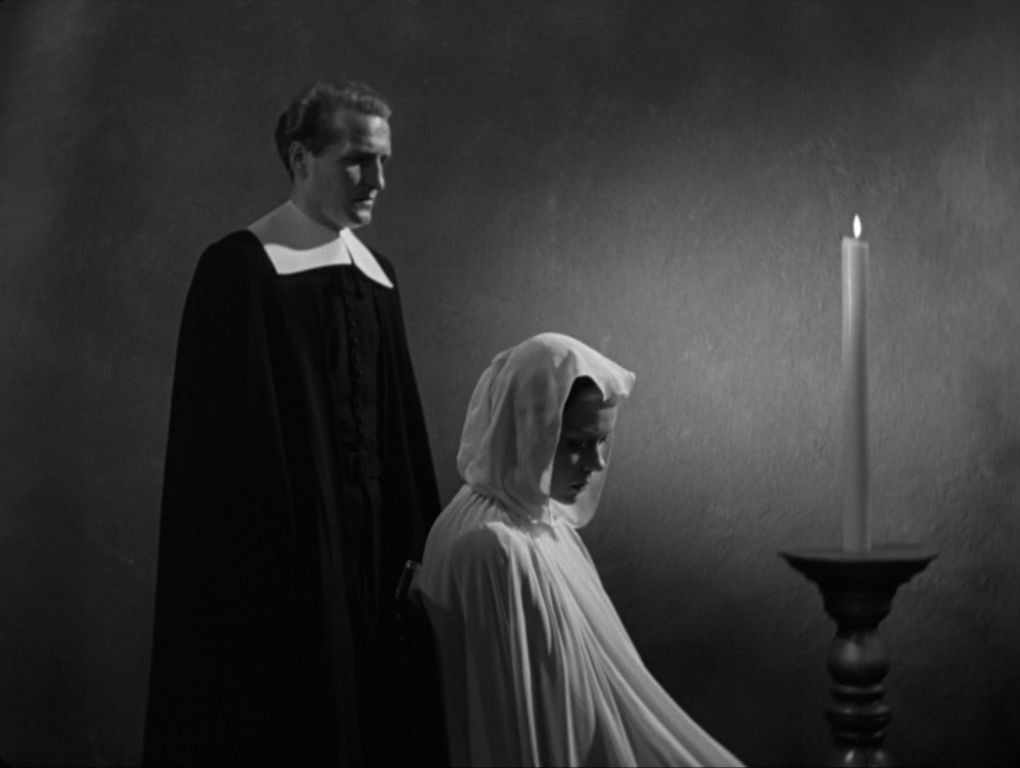
The movie’s title puts its argument in context. The “Day of Wrath” prophesies God’s unanswerable judgment over all human beings, and the song from the Requiem Mass illustrates this divine power. The corrupting force of language, according to the movie, is that it makes it too easy for humans to play at being God. Anne’s experimentation with witchcraft begins when she marvels at her mother’s sorcery: “I think it strange that… a human being can have such power.” She then summons Martin from beyond earshot, and after he magically appears, she begins to relish the unwholesome power of words more and more. She wants to play God just as much as the judges do when they condemn and burn Herlof’s Marte.
It’s one thing to argue that language tempts humans with quasi-divine power, but a movie’s job is to give its argument emotional weight. A close reading of the final scene at Absalon’s funeral shows how carefully a movie can build to an emotional expression of its thesis.
After his eulogy Martin asks the attendees to allow him “one more word”, a phrase he repeats for emphasis – and if we’re aware by now of the movie’s attitude toward words, we know that Martin is courting trouble. His added word, it turns out, is to declare that no man or woman is responsible for his father’s death; and as he says this his grandmother’s face turns up to glare at him. Martin’s words, however good his intentions, immediately provoke his grandmother to denounce Anne as a witch. While it’s easy to think she was already waiting to denounce Anne, her acting says otherwise; Martin’s words are just too much for her to bear.
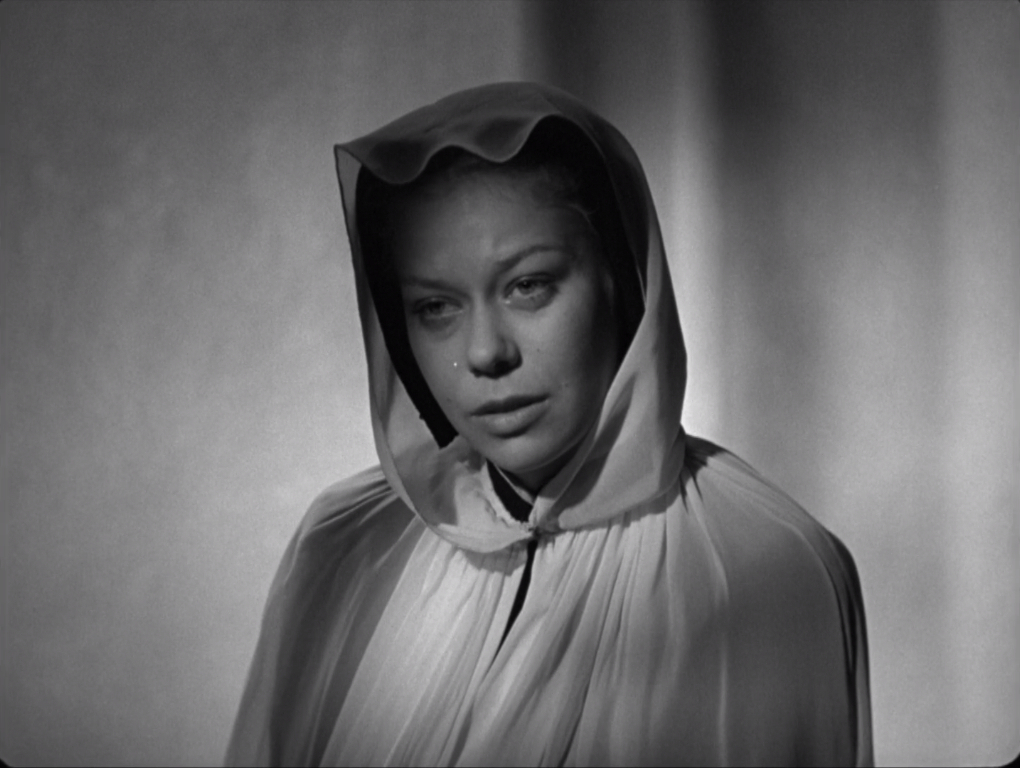
Anne’s response concludes the movie, and by now she has become totally sympathetic. Besides “playing God” with the powers inherited from her mother, it’s difficult to find fault with her. Forced into marriage with an old man, her long-cherished wish for a child has been frustrated. This single-minded desire shows in the blossom on her apple tree, in the unfinished child in her needlework (Martin’s grandmother stands next to this needlepoint at the moment when she too becomes childless), and in Anne’s affair with Martin who not only offers a chance at real motherhood, but as her step-son he has already given her the fantasy of motherhood. Just before the funeral Anne had lied to Martin, swearing she did not cause Absalon’s death, but his subsequent promise to stay with her proves as false as her oath. When his grandmother accuses Anne of acting in concert with “the Evil One”, Martin crosses to the other side of his father’s coffin, leaving Anne symbolically and emotionally alone.
The movie has now come full circle, from one accusation of witchcraft to another. The word “evil” echoes Herlof’s Marte’s line about herbs gathered under the gallows: “There is power in evil.” We know Anne has no special relationship with any devil, but the words are too powerful to fight against. Whereas Marte had confessed under physical torture, Anne confesses under the duress of total loneliness – she has lost Martin and will never have the child she craves. In the middle of the movie she had said to Martin, “I see you through my tears,” and he answered, “Tears that I wipe away.” Now her last line echoes this recent memory: “I see through my tears, but no one wipes them away.” It’s hard to imagine a more profound expression of loneliness. Whereas the first half of Day of Wrath may have impressed us with the horrors words can lead to, still it’s impossible to convey the agony of burning to death. In its last half, through Anne, the movie begins to give us tangible experience of the terrible witchcraft of language.
CONNECTIONS:
Vampyr – Supernatural horror (vampires, witchcraft) as a metaphor for a real-world problem
Ordet – Four insertions of written texts with dire significance; skepticism toward the influence of words; warning against the temptation to play God
Fever Mounts at El Pao – Uncannily destructive power of words/paper
The Servant – Perversion of language’s intended purpose
Charulata – Skepticism toward the abstraction of written words
Gertrud – Written and spoken words portend disaster
Zabriskie Point – Harmful or corrupting power of words; contrast between words and nature
Breaking the Waves – Structural equivalence between a persecuted woman and her accusers; argument against the tyranny of words; human tendency to play God
Dogville – Use of words to play God; allusions to Garden of Eden via apple tree
Pan’s Labyrinth – Unsuspected equivalence between the seemingly innocent and the guilty